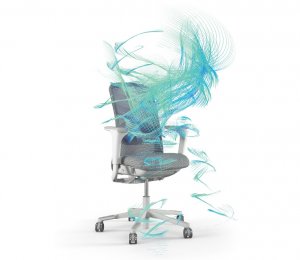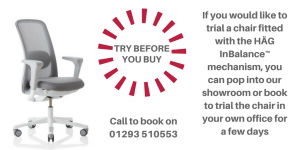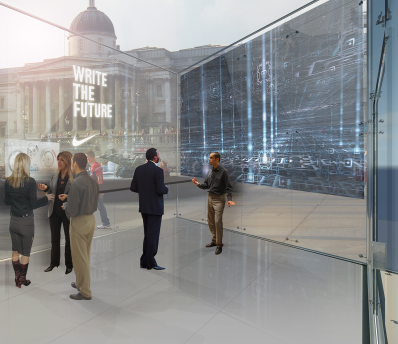WHETHER YOU ARE AN EMPLOYER OR AN EMPLOYEE, THE ISSUE OF EMPLOYEE RETENTION IS ALWAYS A TOPIC OF IMPORTANCE; HOWEVER, WITH THE ECONOMY SLOWLY IMPROVING IN LINE WITH GENERATION Y WHO ARE ALREADY SHAKING THINGS UP IN THE WORKFORCE, EMPLOYEE RETENTION IS GOING TO BE A HOT TOPIC ON EVERYBODY’S LIST.
SO, AS AN EMPLOYER, HOW CAN YOU GIVE MORE TO YOUR EMPLOYEES, RETAIN AND ATTRACT THE TALENT AND STILL KEEP BUSINESS AND PRODUCTIVITY A PRIORITY?
With the right to request flexible working – anything from flexi-time to job sharing – now law, any employee with more than 26 weeks service can request a change in their normal working pattern and an employer must give at least one of eight approved reasons, with proof, as to why the request is rejected in order to decline.
This right was previously only given to parents of children up to 17 years of age and those with dependents, such as carers. Now, there is to be no priority given to these groups over anyone else who wishes to ask for flexible working and companies have been told to expect to face a claim for indirect discrimination if they are found to be too heavily weighted in a certain group’s favour with no good explanation, (i.e all employees are without children, therefore you cannot grant those with children flexible working).
The new legislation is worrying some, such as the FSB, who say that competing or rejected requests could do exactly the opposite of what the government proposes and lower productivity and morale and breed negativity.
So, what can you do if you can’t meet the requests for flexible working because, especially if you’re a SME, you’ll find it hard to cover the costs of allowing this? How can you adapt your own policies to help those that government legislation hasn’t helped and keep them loyal to your business for as long as possible?
Sabrina Parsons is CEO at Eugene, an Oregon based software company. The title of her blog page
“Mommy CEO” may give you some ideas as to how she’s adapted her business to support herself and her employees. As she says in her blog:
” any privilege I get in the office, is extended to all employees” Sabrina Parsons, Kids at Work? Why It Works and Helps Women (and Men!) Succeed”
She appears to have hit the nail on the head when it comes to being fair to employees and has chosen not to adopt the attitude of an authoritarian style manager, something that Generation Y – who will predictably make up the majority of her staff base in due course- will not stand for.
Sabrina allows her staff to bring their children into the office when their child care plans haven’t worked out or when it is the school holidays. She is eager to stress that it is not an alternative to a nursery, but means that on those inevitable days when there are hiccups with childcare plans, her staff don’t have to miss work, they don’t have to feel torn between their family and work and productivity is less affected.
The fact that her employees can enjoy these family friendly policies (including flexi-time and an office environment complete with comfy couches and crayons) has allowed Sabrina to enjoy a loyal workforce with little staff turnover. Revenue from the company’s flagship product also grew by 106% in 12 months. Parsons attributes this to a happy team which now includes 4 working fathers who are taking advantage of the policies on offer.
In regards to employee retention she advises that the simplest way to apply the right strategies to your own business is to:
“think about the real things that matter to employees and give access to talent that you are or could be losing”
It is true that the hard to replace talent will be in high demand and with the improvements of the economy, they won’t find it hard to find somewhere else to go if your strategies aren’t working for them and their lifestyle. If you think that employees are stuck between a rock and a hard place and will be grateful for what they’ve got, you’re wrong and your business will suffer for any outdated policies, particularly when Generation Y are fully integrated into the workforce. There is no running away.
Even scarier and potentially more detrimental to your employee turnover rate is the social era that we’re living in. It is now even easier for candidates to find a new job with friends able to suggest roles they’ve heard of at the touch of a button and mailing lists that can match a candidate and a job together. The existence of sites such as LinkedIn, means that one of your employees could be headhunted at any time, without even being aware themselves that they wanted to change their job or that there was a better role out there for them.
It is also true that the upcoming Generation Y and indeed many currently in the workforce share similar wants and needs in how they think they should feel about their job. Here, Maslow’s hierarchy of needs is a useful model for grouping your employees and assessing their needs – however, remember that this is not a hard and fast rule and some form of personalisation is still required for employees to feel engaged and important within the business.

- Base – Survival: Disengaged, only turn up to work for the money, carry out the bare minimal in a day and would leave for another job very easily
- Level 1 – Security: Interested in overtime to meet financial needs but still disengaged and dislike their job
- Level 2 – Belonging: Almost engaged, know they are part of something bigger but may still leave if tempted
- Level 3 – Importance: Engaged, feel important, will only leave for a very good offer
- Top Level – Self Actualisation (estimated only 15% of the workforce reach this point currently): Highly engaged and love their job
You may think disengaged employees are not such a catastrophe for your field of work; some job markets, such as retail, which generally employs a high level of part-time or student staff, are aware that employee turnover is high and don’t mind this because there are still “bodies in spaces”, but disengaged employees actually cost the UK economy between £52- £70 million annually. Plus, employees who have stayed with the same company move up the value curve and become an appreciating asset to companies with a higher productivity rate and better knowledge than those who are simply part of an accepted “employment cycle”.
Even if a productivity rate is of no importance to you, realising the cost of losing an employee may make you think twice about improving your employee retention plans. It is estimated that it can cost up to 1.5-2x an employee’s annual salary through the process of losing one worker and employing another:
- Hiring a new starter costs money and time through advertising the role, interviewing candidates etc
- The cost to a company on training a new recruit (2-3 years worth of training in some form, costs around 10%-20% of the recruit’s annual salary)
- The loss of productivity through spending time on the hiring process and training up the new prospect (it is estimated that around 1-2 years of productivity is lost during this time) and letting the team find a new way of working with a new member
- Loss of engagement from other employees who see a high turnover rate and become discouraged
- Customer service level loss and cost of errors made through new recruit learning the job
SO, HOW DO YOU MOVE YOUR EMPLOYEES FROM SURVIVAL OR SECURITY LEVEL UP TO IMPORTANCE OR EVEN SELF-ACTUALISATION LEVEL?
– Make pathways to self-actualisation clear for all employees, don’t allow them to think that this point of the hierarchy is only available to a select few or the “elite”.
Equip them with autonomy and independence whilst motivating them with clear objectives. This is especially important to Generation Y who crave career growth and varied, interesting roles where they are challenged and can learn.
– Another important factor for Gen Y and indeed most other working generations is continuous and instantaneous feedback. Many companies are beginning to realise this and put a priority on token gifts and handwritten notes, rather than solely recognising talent at annually organised events.
– Make the company’s mission and vision clear to all employees and, if practical, highlight the ways in which each team or individual member can contribute towards this bigger picture. This makes them feel important and the sense of achievement they will fell when a goal is reached will boost morale and self-esteem – they are one step closer to self actualisation and there is a clear opportunity for active engagement.
– Be an available coach and mentor, rather than a deligater or adopting a management style akin to dictatorship. In a recent
Hays Recruitment Experts study, 51% of their respondents said that having a manager who they feel can and will mentor them to reach their full potential is the type of person who they will be most productive for.
– Operate an open door policy and make time to listen to employee’s suggestions, ideas or concerns. This gives you an opportunity to get to know staff and build an appreciated rapport, meaning they are less likely to want to leave and at the minimum, they won’t want to let you down.
– In light of the above point,
HOLD THAT FOLLOW UP MEETING! There is no point in listening to your employees if you do not follow up the matter with them after a reasonable amount of time. Not making time for this meeting, even if you were unable to do anything about an issue or an idea, is worse than not being available to listen to them in the first place; they feel let down and forgotten about and thus they don’t feel important or valued.
– New challenges are also highly important in employee retention. The idea of “a job for life” barely exists nowadays and will be even more of a rarity once Generation Y are at their peak in the work place.
Recent research has shown that by the age of 38 most Gen Y employees will have had at least 14 different jobs which equates to a new role every 1-2 years.
– Many companies who have a low staff turnover rate engage the notion that “people leave managers, not jobs” and just as external customers would stop using their company if they provided poor customer service, they recognise that the same effort should be put in to retaining and pleasing their internal customers.
– Finally, an area that is receiving a lot of focus recently – a vital part of employee retention but in no way the only policy to be implemented – is redesigning the office space.
Provide your staff with quiet areas for focusing, break-out areas for relaxing and both comfortable and formal collaborative spaces to cater to all working generations and personality types.Many companies are finding that changing the work space not only improves morale and boosts productivity but also reduces costs such as power usage reduction, reduction in the total work space cost per person and lower absenteeism (something that can force your hand into creating high staff turnover due to sickness policies if absenteeism is high).
What do you do within your business to improve employee retention and what experiences as an employer or an employee have you had when it comes to efforts to keep staff turnover low?





